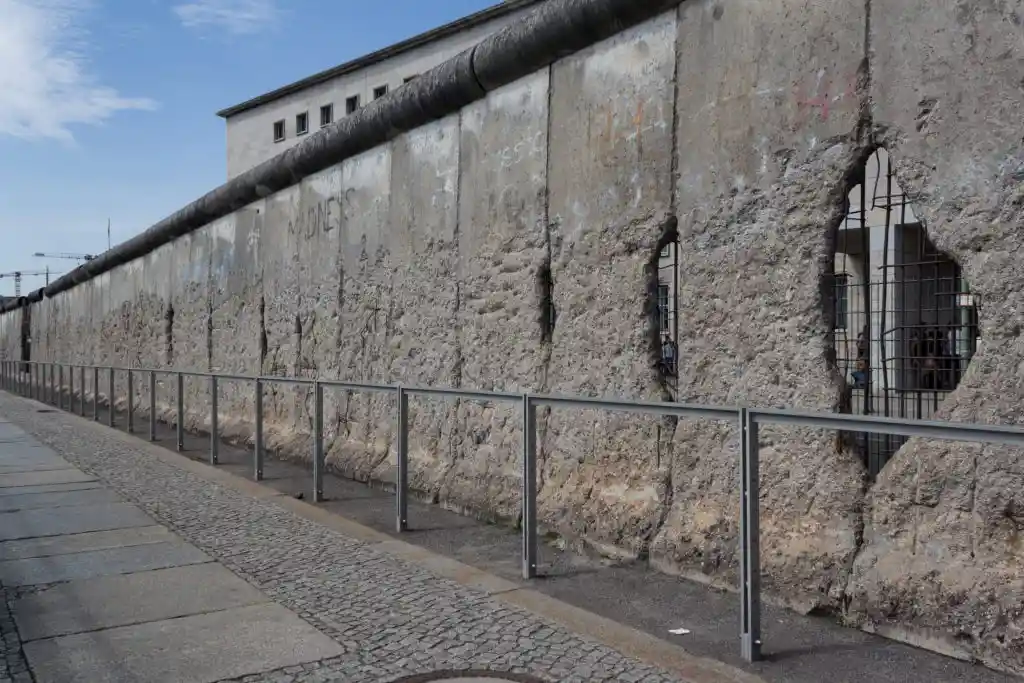Topography of Terror Museum Berlin
The Topography of Terror Museum Berlin is one of the capital’s most important memorial sites. Located on the former grounds of the Gestapo and SS headquarters, it documents how terror was organized and executed in Nazi Germany. As an open-air site and documentation center, it offers a powerful, unfiltered encounter with the darkest chapter of Berlin's history.

The Site of Power and Fear
The Topography of Terror stands on the very grounds where the Gestapo, SS, and Reich Security Main Office once coordinated the brutal repression of millions.
This was not merely a building—it was the heart of a system that controlled, surveilled, and destroyed lives.
Visitors walk along excavated cellar walls and exposed foundations, witnessing the physical remnants of state-sponsored tyranny.
Unlike many historical sites, this museum is not housed in a restored building—it embraces the ruin as a powerful symbol of what was and what must never be again.
The open-air exhibition, with its large photo panels and clear chronological narrative, provides immediate and direct access to the reality of terror that originated here.
Contextual information makes it accessible even for those unfamiliar with German history.
Exhibitions & Documentation Center
The Topography of Terror offers a carefully curated main exhibition inside its Documentation Center:
“Topography of Terror: Gestapo, SS and the Reich Security Main Office.”
This permanent display documents how the institutions of repression functioned, how ideology turned into policy, and how this policy became systematic persecution.
Visitors are guided chronologically from the rise of National Socialism to the aftermath of World War II.
The exhibition combines historical photos, government records, letters, maps, and survivor accounts to paint a multidimensional picture of the Nazi power structure.
Temporary exhibitions complement the main display and focus on related topics like resistance movements, postwar justice, or biographies of individual victims and perpetrators.
Educational tools, touchscreens, and multilingual displays make the complex material accessible and emotionally engaging.
Did you know?
The site of today’s Topography of Terror was once the nerve center of Nazi repression. It housed the Gestapo headquarters and the SS command offices, where thousands of people were interrogated, tortured, and deported between 1933 and 1945—often without any legal process.
The exposed basement foundations are now part of the museum. Few memorials in Europe are located directly on the original site of terror—this one is.
Discover Berlin’s Hidden Layers
Explore historical tours near the Topography of Terror and dive deeper into Berlin’s complex past.
Memorial Area & Wall of Remembrance
Outside the Documentation Center, the memorial grounds invite visitors to reflect. The preserved cellar remains of the former Gestapo headquarters serve as a powerful reminder of the crimes planned and carried out from this very location.
Along the excavated remains runs the Wall of Remembrance – a silent and sober tribute to the countless victims of Nazi terror. No dramatization, no spectacle – just names, dates, and stories that speak for themselves.
Benches and open space encourage pause and contemplation. It is not just a place to learn, but to mourn, and to acknowledge the enduring pain inflicted by authoritarian regimes.
The open-air exhibition panels further contextualize the site’s role within the Nazi regime and allow visitors to connect visual history with physical remains in a moving way.
Educational Mission & Guided Tours
The Topography of Terror is more than a historical site – it is a place of active education. The foundation running the memorial offers a wide range of materials and programs for schools, universities, and institutions from around the world.
Visitors can join guided tours in multiple languages or explore the site on their own with thoughtfully curated texts and timelines. For groups, advance bookings are recommended.
Regular lectures, panel discussions, and exhibitions offer insights into broader themes of state terror, resistance, remembrance culture, and human rights – linking the past to the present.
The goal is clear: to ensure that the crimes of the past are not forgotten – and that the warning remains visible and tangible for future generations.
Visiting Information & Practical Tips
- 📍 Address: Niederkirchnerstraße 8, 10963 Berlin (next to the Berlin Wall remains)
- 🕒 Opening Hours: Daily from 10:00 AM to 8:00 PM. Outdoor exhibition accessible 24/7.
- 💰 Admission: Free entry
- 🚉 Nearest Transport: U-Bahn: Kochstraße or Potsdamer Platz; S-Bahn: Anhalter Bahnhof
- 🗣️ Languages: Main texts available in English and German. Audio guides & tours available.
- ♿ Accessibility: Fully wheelchair accessible, with barrier-free paths and restrooms
- 📷 Photography: Allowed for personal use, but respectful conduct is expected
Popular WWII Tours in Berlin
Experience Berlin’s turbulent past on guided tours that explore key locations from the Nazi era, the Berlin Wall, and Cold War history. Each tour offers unique insights into the city’s complex legacy.
• Third Reich Walking Tour
– Explore Nazi-era landmarks and the roots of Hitler’s regime.
• Skip-the-Line Berlin Wall Museum
– Discover the divided city and Cold War tensions.
• Berlin Wall & East Side Gallery Tour
– Walk along the Wall and discover its artistic legacy.
• Reichstag & Government District Tour
– Learn about Berlin’s political history from dictatorship to democracy.
Other Museums on WWII and German History
Frequently Asked Questions: Topography of Terror Berlin
What makes the Topography of Terror different from other Holocaust memorials?
Can I visit the remains of the Gestapo basement prison?
Is the museum suitable for children and school groups?
Are there guided tours available at the Topography of Terror?
Does the museum focus only on the Nazi regime?
Map: Topography of Terror & Nearby Highlights
Explore the historical surroundings of the Topography of Terror – from Berlin Wall remnants to iconic WWII memorials within walking distance.
